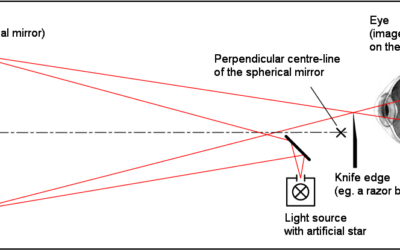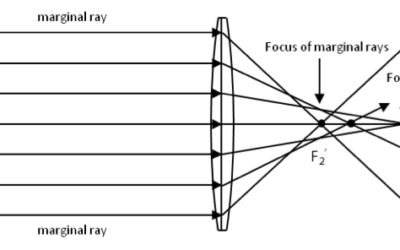As optical engineers, we are in charge of more than just the design and implementation of optical systems for specific applications: we often need to evaluate optical systems’ performance or to assess the quality of optical components. To do these assessments, we rely on different techniques and methods from simple interferometric setups to the use of electron microscopes for surface evaluation. Among those techniques, a useful one is Bidirectional Scattering Distribution Functions (BSRDF) and the related Bidirectional reflectance distribution function ( BRDF)
Scattering techniques are used to describe surface quality. Instead of visual observation of the fringes as is usual in interferometry techniques, there is a measurement of the scattered light by a surface. Basic scattering indicates that the fraction of scattered light to that which is spectrally reflected is proportional to the roughness of the surface and the light wavelength. Scattered light for visible wavelengths from high quality optical surfaces is created almost entirely from surface roughness not from scratches or other cosmetic defects. However, at infrared wavelengths, the scatter from micro irregularities is decreased by a factor of 1/λ^2 from the visible, while the scatter from defects remains nearly constant. Hence, at a wavelength of 10.6 um, the scatter is nearly all due to defects and is often over an order of magnitude larger than expected from the simple scalar scattering theory alone. Scattered light is then, in its own right, a valuable means of exploring the structure of an optical surface. A typical setup can be seen in Figure 1.

Some critical unknown variables of the BSRDF are the index of refraction, the reduced albedo, the absorption coefficient, and the reduced scattering coefficient. It is critical to be able to acquire the reflectance distribution of the reflected light using an optical device since permeated light is not measurable in some materials. By fitting the measured sample data obtained from an image-based measurement system, it is possible to determine the reduced scattering and the absorption coefficients. The bidirectional reflectance distribution function is then an expression of the physical property of a material, which describes the pattern of light reflected from a surface of the material to all directions above the surface, for all directions of incident light.
BSRDF has different applications in industry: in aerospace industry, it is used to verify coatings in different components, to determine the specularity on solar arrays, and lately, it has gained a lot of application in computer science where it is used to render more realistic images.





